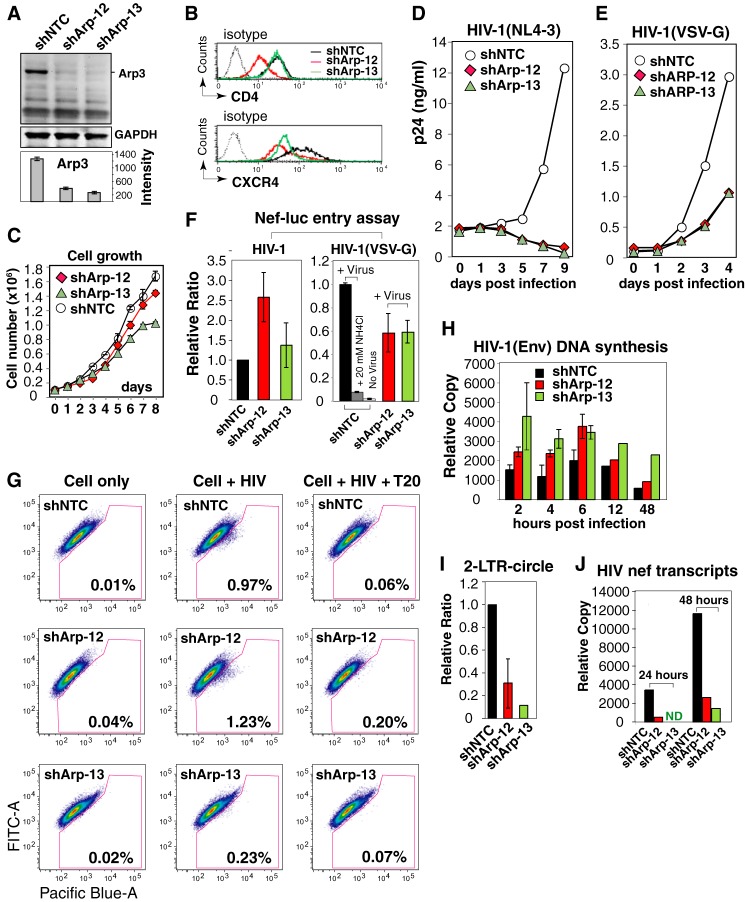FIGURE 3.
Arp3 knockdown diminishes HIV-1 infection and viral nuclear migration. A, Arp3 knockdown in shArp-12, shArp-13, and the control shNTC cells was analyzed by Western blot. B, shArp-12, shArp-13, and shNTC cells were stained for surface expression of CD4 and CXCR4. C, shArp-12, shArp-13, and shNTC cells were measured for growth rate. D, shArp-12, shArp-13, and shNTC cells were infected with HIVNL4–3 to monitor viral replication by p24 release. E, these cells were similarly infected with a VSV-G-pseudotyped virus, HIV-1(VSV-G), and monitored for p24 release. F, entry of HIV-1 (left panel) into shArp-12, shArp-13, and shNTC was measured with a Nef-luciferase-based entry assay (left panel). A VSV-G pseudotyped reporter virus was similarly used in the Nef-luciferase-based entry assay (right panel). As a control, cells were also pretreated with 20 mm NH4Cl during infection to inhibit endocytotic entry (right panel). G, viral entry into shArp-12, shArp-13, and shNTC were also measured with a BlaM-Vpr-based entry assay. For control, the cells were also pre-treated for 1 h with T20 peptide (0.1 mg/ml) and then infected. H, shArp-12, shArp-13, and shNTC cells were infected with a single-cycle HIV-1(Env) that was pseudotyped with HIV-1 gp160. Cells were infected for 2 h, washed, and then taken at different time points for PCR quantification of viral DNA. I, viral 2-LTR circles following HIV infection at 48 h were also measured. J, viral mRNA was also extracted following infection at 24 and 48 h, and quantified by reverse-transcriptase PCR for the nef transcripts.

